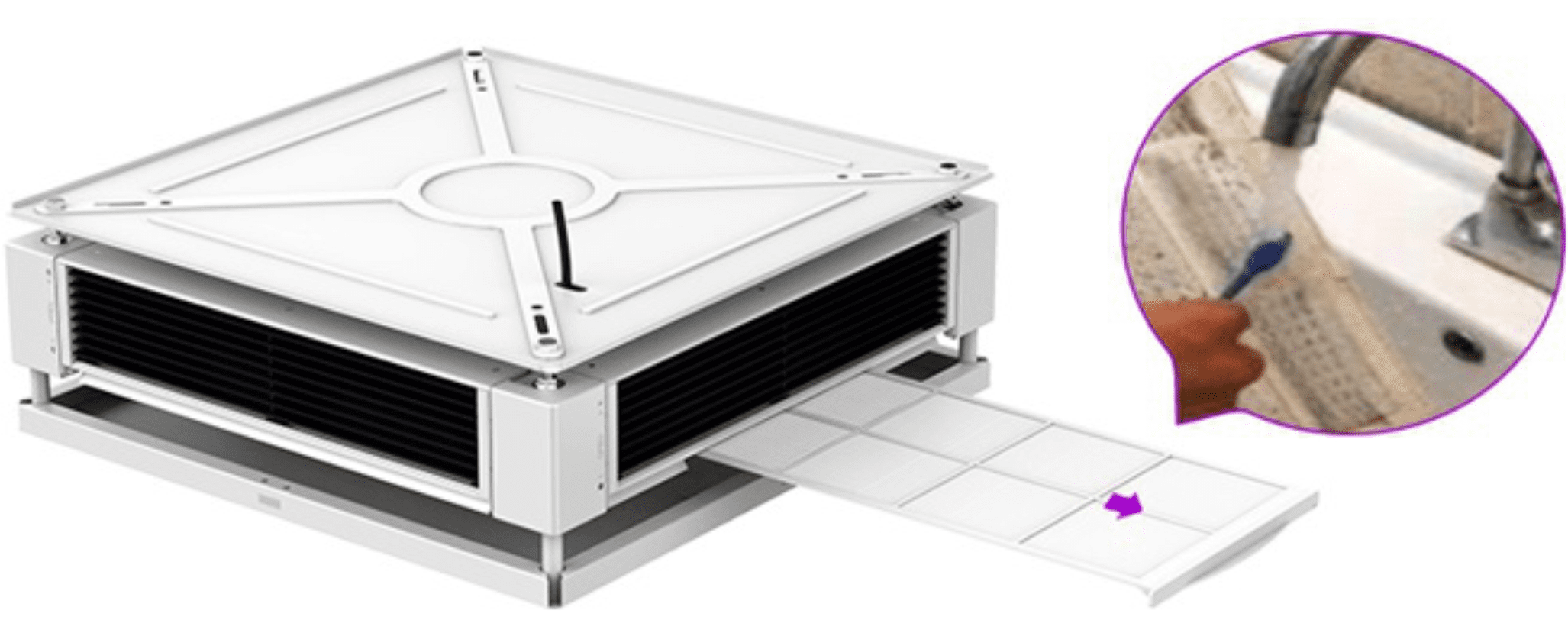
Our most powerful air purification system with a four sided design that improves the purification range and efficiency. Disinfects the upper air level above 2.1m with UVC radiation without affecting human activities below. Automatically shuts off when human presence is detected within the purification layer. Internal 3-speed fan circulates surrounding air through the UVC disinfecting zone, resulting in a 99.9% efficiency.
Applications
- Office Buildings
- Hospital / Health Care Facilities
- Schools / Universities
- Day Care Centers
- Churches
- Hotels
- Supermarkets / Retail Environments
- Restaurants / Entertainment Centers
- Laboratory / Research Facility
Product Features
Working Principle
Four sides are equipped with a special high-energy UV-C lamp tube energy-concentrating layer device, which is installed on the ceiling and forms a radiation layer in the upper section of the room. The centrifugal fan quickly forms air convection through the four sides and exhausts purified air out. Bacteria and viruses floating in the air will be quickly killed once they enter the ultraviolet radiation layer.

Smart Sensor Design
Built in PIR module on four sides detects anyone entering the ultraviolet radiation area and shuts off the UVC lamp to avoid exposure to humans, ensuring safe performance.

Reusable Filtration System
In addition to UVC purification, dust and pollen is also captured through a washable filtration system.

Specifications
| Power | 150W | |||
| Input Voltage | 100-270V | |||
| Wavelength (nm) | 253.7nm | |||
| Radiation Intensity (1m from tube) | 100µW/cm2 | |||
| Noise Level 1m Distance (DB) | Level 1: 47.7DB / Level 2: 50.9DB / Level 3: 54DB | |||
| Tube Type | 2G11 | |||
| Working Temperature | 50 ~ 400C | |||
| Product Size | 595*595*168mm | |||
| Remote Control Range (m) | 3m | |||
| Infrared Sensing Range (m) | 2m | |||
Download Product Cut Sheet
Additional Information

Applications

Request a Quote
Knowledge Base
What is UV-C advantage and disadvantage?
UVC lamps have thousands of hours life. This limits the need for consumable replacement and maintenance. UVC Disinfection Disadvantages. UVC light works only on surfaces within the field of view. If there are objects that prevent light from reaching the surface directly, the surface will not be disinfected sufficiently
Do UV lights really make indoor air quality better?
UV lights are an excellent defence when it comes to protecting your indoor air quality (IAQ) from bacteria. The quality of air inside your home is crucial to the health and comfort of your family, and this is true now more than ever!
Are UV-C lights worth it?
They’re inexpensive, effective, and easy to maintain, making them a no-brainer for anyone with a home HVAC system. Even if your HVAC system has a high-quality air filter, adding a UV light will help kill microorganisms and bacteria that might be small enough to slip through the filter.
Does air purifier with UV light work?
While UV air purifiers usually have a quiet operation and may be effective at removing bacteria from the air if a person uses them with HEPA filters, these devices can emit ozone. Additionally, unlike HEPA filters, UV air purifiers cannot effectively remove VOCs or other gases from the air.
Is ozone from UV-C light harmful?
Myth #6: UV-C disinfection produces ozone that can be very harmful. Some do. (But not ours). While at some wavelengths, the energy of UV light can produce ozone, this only happens at below 242 nm.
Which is better UV LED or UV-C LED?
If the application is a larger, higher flow system in continuous operation, UV lamps can have advantages to provide the best solution to end users. When it comes to compact, point-of-use appliances and purifiers, UVC LEDs provide lower costs of ownership and better alignment with design needs as compared to UV lamps.
What type of UV light kills mold?
The type of ultraviolet light that’s able to effectively get rid of mold is UV-C, which is a very short wavelength of UV light. Because of how beneficial UV light can be at the right amounts, this light is commonly used for disinfection purposes, which can include treating ballast water with UV disinfection.
